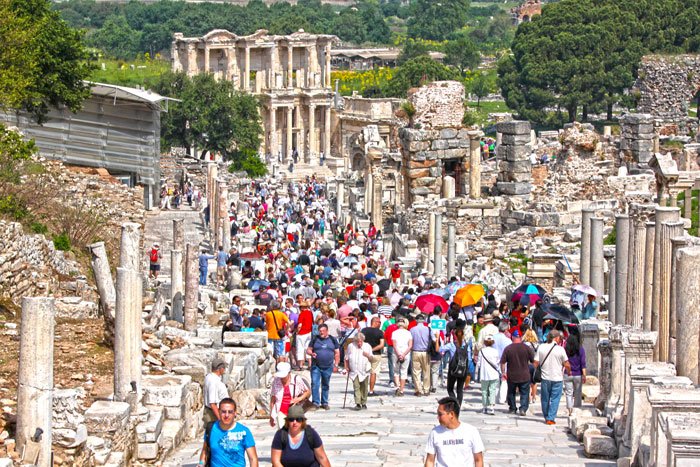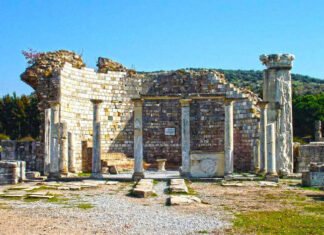Ephesus walking tour – Saint John Basilica
Ephesus walking tour – Initially, a simple church structure may have been built over the Apostle’s grave. But by the fifth century there was a long-standing basilica with a wooden roof on the site. Following its destruction by an earthquake in the early fifth century; a new basilica was built the Emperor Justinian and his wife Theodora, who also built Aghia Sophia in Byzantium and the fortified Monastery of Saint Catherine at Mount Sinai.
Inside, the ruined basilica, the site of the original tomb, where the bema or altar once stood, is marked out by four marble columns from the Middle Byzantine period (10th to 12th centuries). Originally, the remains of three tombs were found when the crypt below was excavated; and the tomb at the centre was believed to be Saint John’s. But his relics were brought to Byzantium in the 13th century and the tomb has remained empty ever since “Ephesus walking tour”.
Ephesus walking tour – Baptistery
On the northern side of the church, the Baptistery dates from the pre-Justinian church. It has a round baptismal pool at the centre of a cross-shaped plan. The candidates for baptism descended; and subsequently ascended from the pool by three steep steps of stairs on each side, forming the head and the base of the cross. Two square pools for fresh water complete the arms on each side of the cross. Halls at each end of the Baptistery were used for rituals before and after baptism; and the channels for bringing in fresh water can still be seen in the floor of the basilica.




